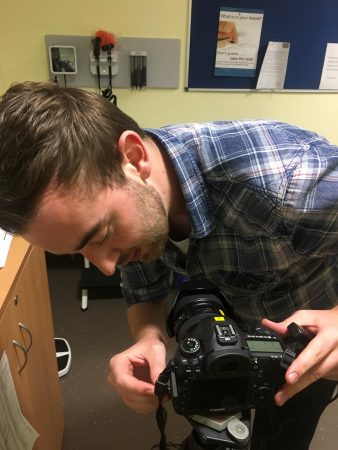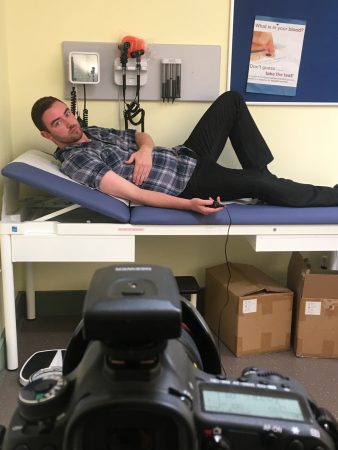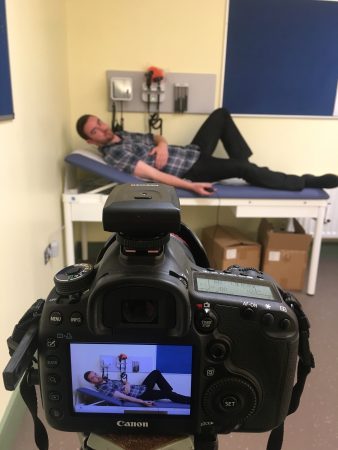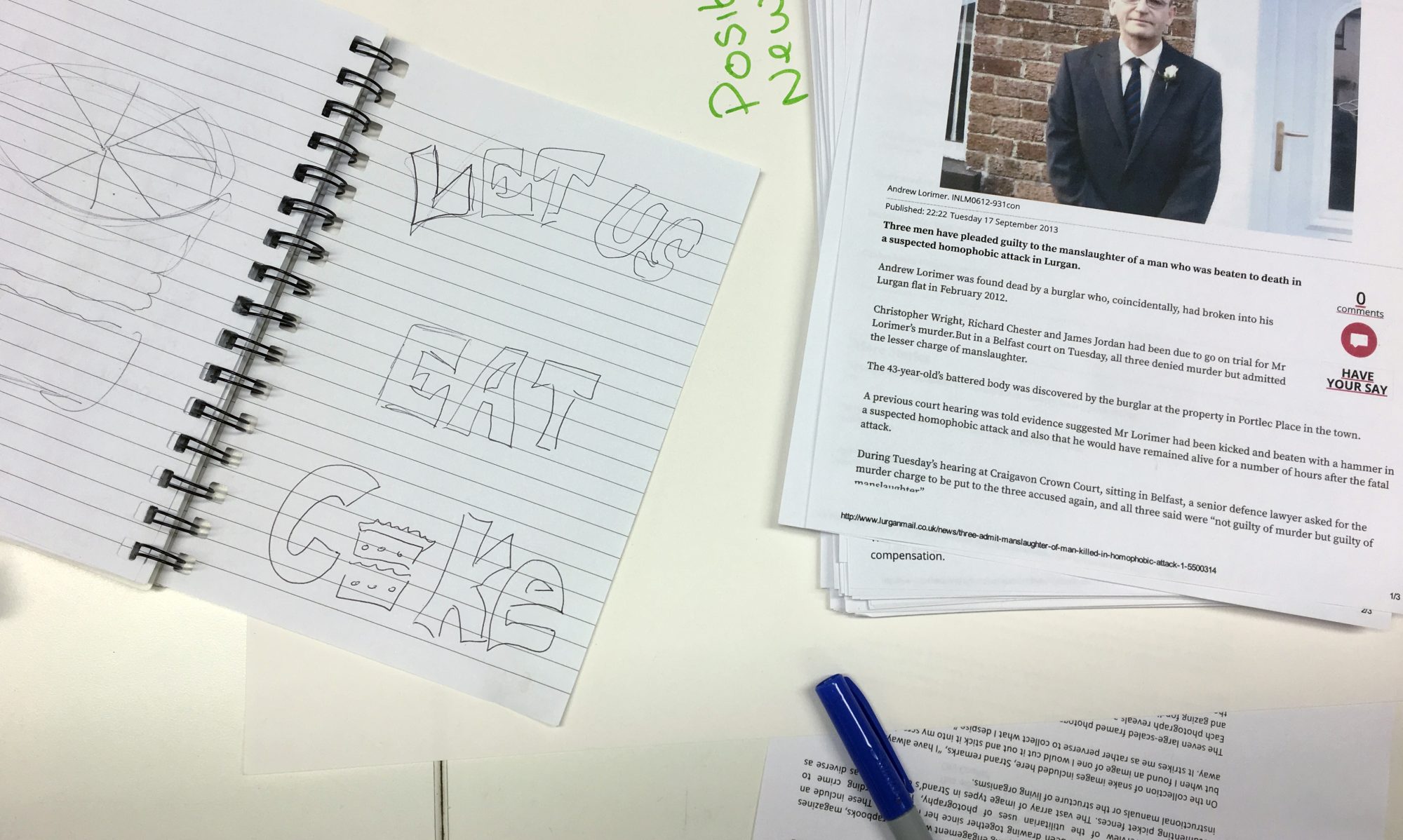When discussing different ideas for our Collaborative Self-Portraits there were a few themes that grabbed my attention. Marriage equality for LGBTQ+ people has always been a top priority for me, and equal rights for gay couples adopting children is also something important for me as I’d love to have children some day. But the one theme I really wanted to focus on is the issue of restrictions on gay men donating blood. This has a particular personal resonance for me.
Recently there have been good steps forward with the lift of the permanent blood ban on gay men donating, but it’s a small step. There’s still a way to go in my eyes. With modern blood screening methods, improved clinical testing, and access to sexual health services, I can’t see any reason why the lift can’t be extended in full to allow gay men to donate if they are healthy. It’s insulting to think that any heterosexual Joe Blogs can donate blood freely and I can’t. To be made to feel that the life giving stuff which flows through your veins is in someway dirty, inadequate, or unsafe, is simply wrong. And what sane man can go without sex for a year if they are in committed, loving and HEALTHY relationships. I’d be more worried about someone who was in a loving relationship who didn’t make love.
From the outset, I always envisaged my Collaborative Self-Portrait being set in a clinical environment. Getting a location to shoot the photo in was tricky and hats off to Anthony for securing the perfect place for me – a small medical consultation suite in the Welcome Organisation in Belfast. This room was perfect. Setting up to create a photograph that portrays a scene of blood donation didn’t take too long. The only spanner in the works was making a decision about whether to take down or keep up a poster on a small display board behind the bed. If it remained it would be clearly visible in the photo. We took a few test shoots, and yep, it could clearly be read. Ironically, the poster was about sexual health testing with the caption, ‘What’s in your blood?’ written large. After some thought we decided to take it down. We didn’t want the wrong message portrayed in the photo and taking it down freed up some space in the background of the picture where later I will add my writing about the theme.

The setting was simple but really effective. Normal donation areas wouldn’t look like something out of ER or Casuality. We explored the idea of using props to mimic an intravenous needle or blood bag, to help clarify what the photo was about, We decided that these things would be unnecessary for the picture, as in reality I wouldn’t be allowed anywhere near these things – my blood wouldn’t be taken and I’d be sent home. I think this is a real shame. In NI we’ve got a shortage of blood and hospitals are crying out for the stuff.
Actually taking the photos was trickier than I thought it would be. First of all there was the lighting, which seemed to work best by bouncing light against the opposite wall. Then there was the pose. What way would someone be sat or laid down to give blood? What facial expression would I put across to show my frustration about the over-arching theme? What should the photo say to someone when they look at it?

After some test shots it was clear that laying down with my ‘donating’ arm extended was best. Then it was onto actually getting the photo into focus. Anthony showed me how to adjust the camera settings, how to switch between auto and manual focus, and how to use various features in the composition, such as the placement of the subject, objects and background, to sharpen the image and draw out things like clarity of the eyes and colour. Eventually I was ready to move around and experiment with the placement of my arms, legs and body, to get comfortable and to work on my facial expression. I wanted to be expressionless but focused. Putting across a message of stubborn frustration wasn’t an easy thing for me. But after I snapped away for long enough, I think we finally got the perfect pic. I think it turned out great from the test shots Anthony sent me. I’m looking forward to working on the finished piece for the exhibition.

